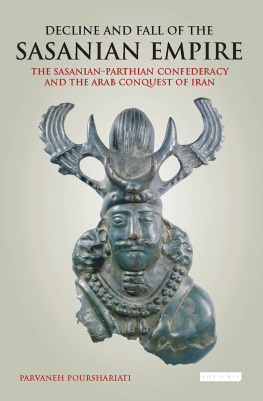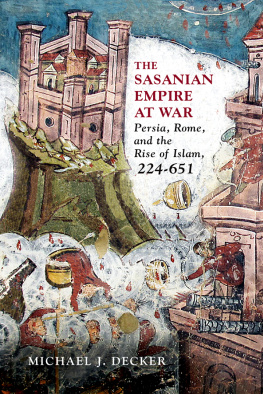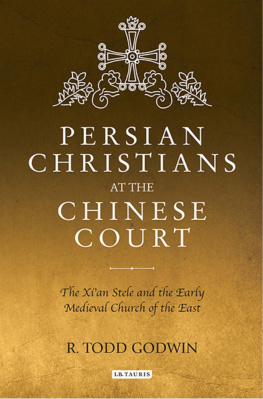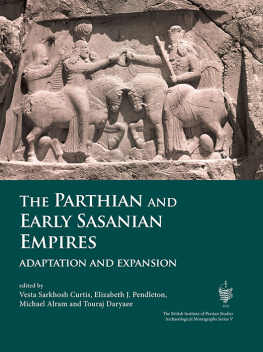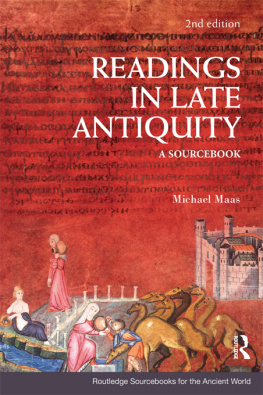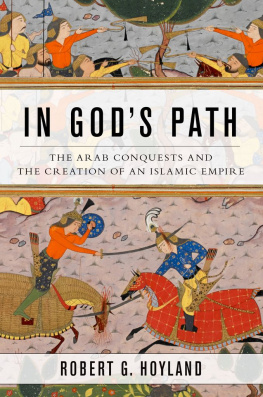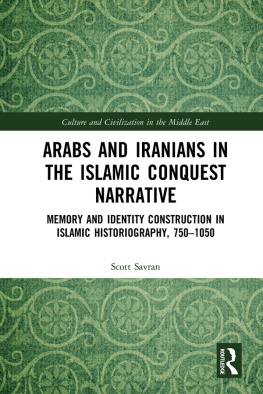A very important and original book, which makes a significant contribution to many aspects of late antique and early Islamic Iran. Scholars will spend many years digesting it, no doubt disagreeing with certain aspects of it, but it will surely remain a vital point of reference.
Speculum
This is a monumental work of first-class scholarship. Its publication represents a landmark, and it immediately becomes the point of departure for further work on the many subjects it deals with. I can think of few other books I have read over the years that can match this works astounding combination of originality, bold vision, clarity of presentation, meticulous examination of the sources, and practical puzzle-solving. I learned immensely from reading it. Dr. Pourshariatis book is in my view one of the most important individual contributions to our understanding of the history of Iran since Christensens LIran sous les Sassanides, published seventy years ago. Especially remarkable is the breadth of the authors agenda, and the way in which she has convincingly woven together different strands. These include: the political rivalry of the great families, the Sasanians collapse before Byzantine and Muslim attacks, the religious diversity of medieval Iran, questions of historiography, the substance of the Iranian popular epic, and the important details to be gleaned from seals and other documents. Any one of these would be (and for many scholars has been) a subject for full immersion for many years, but Pourshariati has integrated each into a complex and meaningful whole, even as she has made signal contributions to the more detailed study of each one. Fred M. Donner, Professor of Near Eastern History, University of Chicago
A fundamental reappraisal of a major issue in Near Eastern history, and a book that will be referred to whenever the subject is discussed, Decline and Fall of the Sasanian Empire is the most important re-examination of late Sasanian and early Islamic history since the work of Christensen in the 1940s.
Hugh N. Kennedy, Professor of Arabic, SOAS, University of London
Dr. Pourshariatis book proposes a reinterpretation of the structure of the Sasanian Empire and of the power struggle that followed the end of the ByzantinePersian War of 602628. The author argues that throughout most of its history the Sasanian state was a confederative structure, in which the north and east (the old Parthian territories of Media and Khurasan) were highly autonomous both politically and culturally. It was Khusraw IIs (590628) disastrous effort to centralize the state that led to its collapse and to the Arab Conquests. Dr. Pourshariati also argues for a significant redating of critical moments in the Arab conquests in Iraq. Taken as a whole, Decline and Fall of the Sasanian Empire is original, innovative, bold, and generally persuasive.
Stephen Humphreys, Professor of Islamic and Middle Eastern History, University of California, Santa Barbara
Both impressive and intellectually exciting, Decline and Fall of the Sasanian Empire is a major, even pathbreaking, work in the fielda field which this book should revolutionize.
Stephen Dale, Professor of History, Ohio State University
Parvaneh Pourshariati is Associate Professor of History at New York City College of Technology (CUNY).
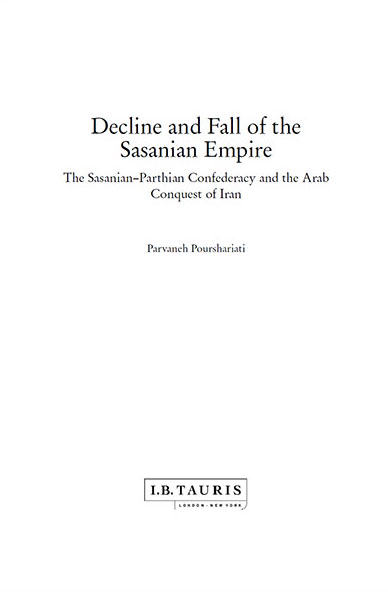
Paperback edition published in 2017 by
I.B.Tauris & Co. Ltd
London New York
www.ibtauris.com
Hardback edition first published in 2008 by
I.B.Tauris & Co. Ltd
In association with the Iran Heritage Foundation
Copyright 2008 Parvaneh Pourshariati
Layout: Hans Schoutens
The right of Parvaneh Pourshariati to be identified as the author of this work has been asserted by the author in accordance with the Copyright, Designs and Patents Act 1988.
All rights reserved. Except for brief quotations in a review, this book, or any part thereof, may not be reproduced, stored in or introduced into a retrieval system, or transmitted, in any form or by any means, electronic, mechanical, photocopying, recording or otherwise, without the prior written permission of the publisher.
References to websites were correct at the time of writing.
ISBN: 978 1 78453 747 0
eISBN: 978 1 78672 981 1
ePDF: 978 0 85771 199 1
A full CIP record for this book is available from the British Library
A full CIP record is available from the Library of Congress
Library of Congress Catalog Card Number: available
From camera-ready copy edited and supplied by the author
In loving memory
of my father:
Houshang Pourshariati
(19342004)

Contents
Note on transliteration and citation
As this book deals with sources from many languages, it has been virtually impossible to be consistent in nomenclature. In general, we adopted the following ranking of languages in descending order of priority in our transliteration of foreign words: English, New Persian, Middle Persian, Arabic, Armenian, Greek, Avestan. A name or a term is then rendered in the first of these languages in which it is well attested. For instance, the third Achaemenid king in these languages is respectively Darius, Drysh, Dr, Drb, Dara, Dareios, Draiiauuau. Since the first, English, form is already in common use, we render his name as Darius. Likewise, although Middle Persian sphbed can be translated in English as general, or rendered in New Persian as ispahbud, we have opted to keep its Middle Persian rendition in order to remain as true to its intended meaning as possible. Similarly, we will use New Persian Nshpr, rather than Nishapur (English), Nw-Shbuhr (Middle Persian), or Nsbr (Arabic). These examples also underline another issue: names of places or offices may have changed over time, and so we will use the name that was prevalent at the period in question. Hence in the case of Nshpr, the older name Abarshahr is not used when discussing events in later Sasanian times. Similarly, instead of modern Istanbul, Roman Byzantium, or late Roman Augusta Antonina, we will refer to the capital of the Byzantine empire during the Sasanian period by its official East-Roman name, Constantinople.
The context and/or the intended meaning will also determine our adoption of a particular transliteration. We shall, therefore, use Armenian Mirranes instead of New Persian Mihrn, for the commander of Petra under Khusrow I; and we shall use Middle Persian kst-i durbdagn, rather than its New Persian form kst-i Azarbyjn, for the quarter of the north. Likewise, to refer to the deity that plays a germane role in this work, the New Persian form Mihr, or on occasion the older form Mithra, derived from Avestan Mira, is used in the Iranian context, whereas the English form Mithras is reserved for the Roman context (Roman Mithraism). In the index and the glossary, an attempt is made to provide cross-references to the most commonly attested forms.
In working with many different sources, the language as well as the script can cause problems. For scripts other than Arabic (like Aramaic, Pahlavi, Armenian, Avestan, or Greek), we have followed the conventions of the translated source. To transliterate Arabic into Latin script, we have more or less followed the transliteration scheme used by the
Next page
